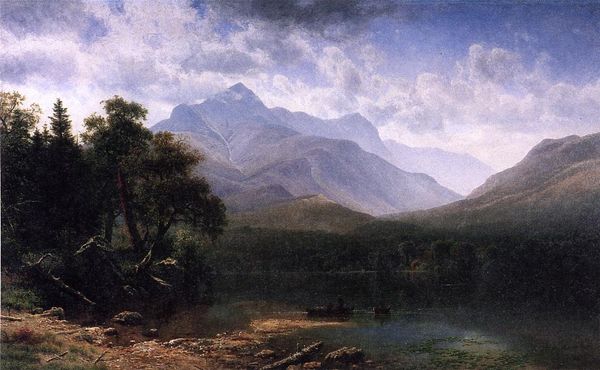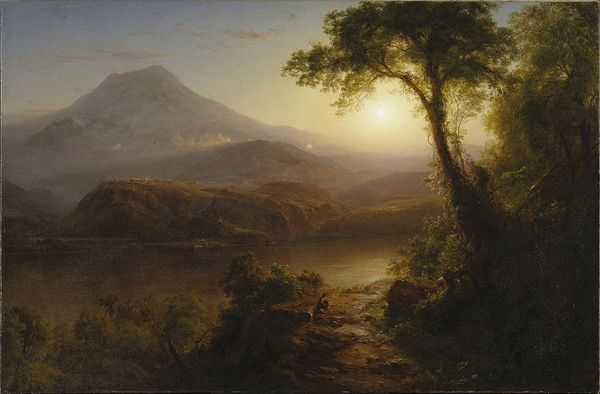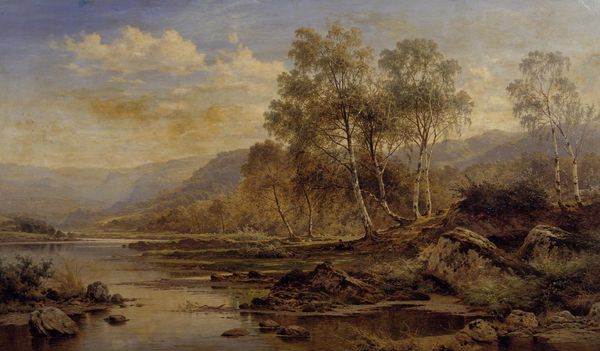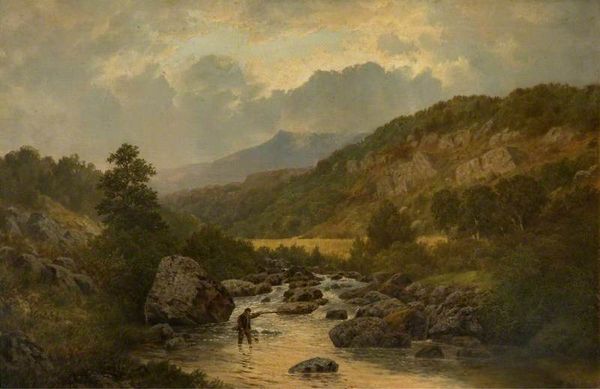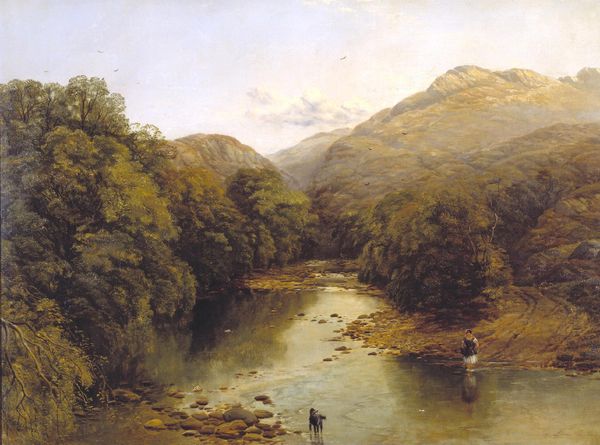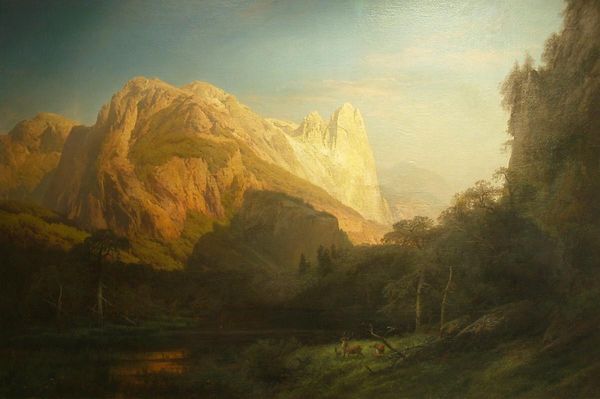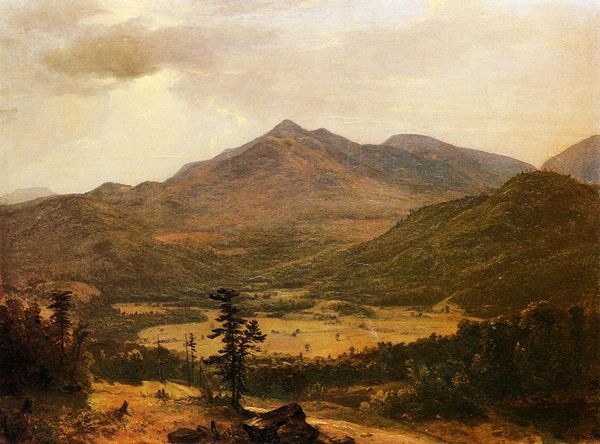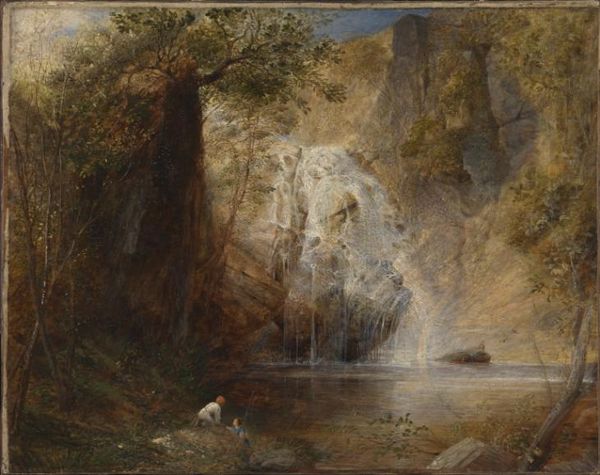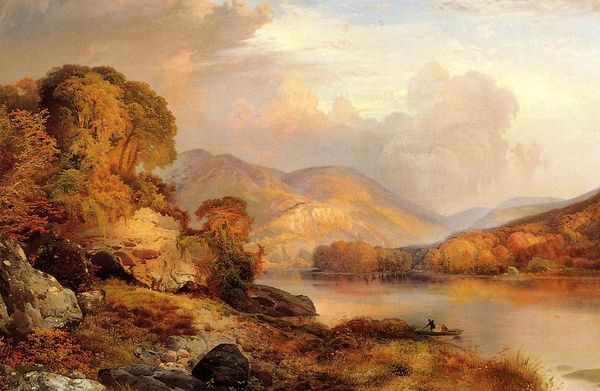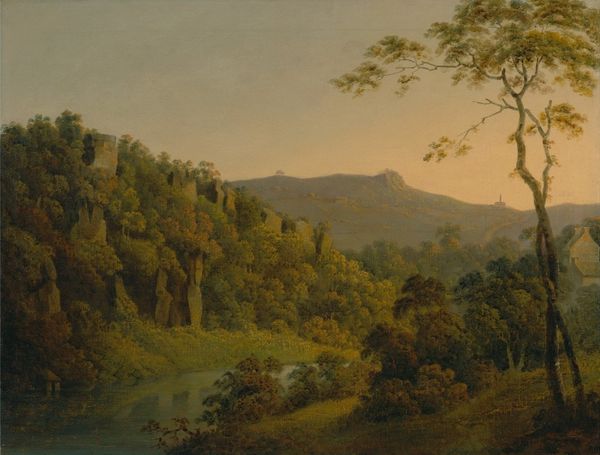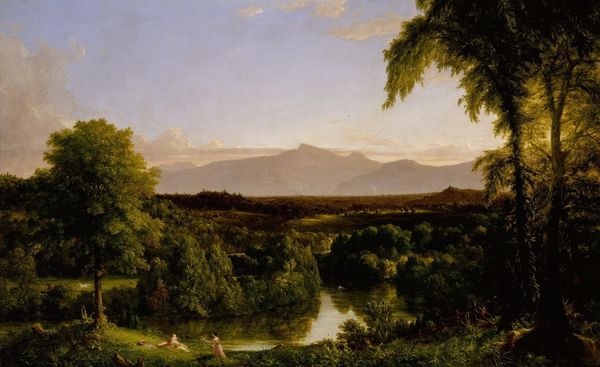
Dimensions: 302.9 x 167.9 cm
Copyright: Public domain
Curator: The scale is arresting; it completely dominates the space around it. Editor: Indeed. This is Frederic Edwin Church's "Heart of the Andes," painted in 1859. It exemplifies the Hudson River School's fascination with landscape, rendered here in breathtaking detail with oil on canvas. It is a painting reflecting his travels and explorations of South America. Curator: Oil paints allows the artist a particular depth in rendering of the lush textures, like the density of foliage. But looking closer at the foreground, I see that people have traversed here as well and perhaps suggests how that has impacted this seemingly pristine natural world. I notice the path to the little white cross. I wonder, how was the raw pigment acquired? How was it processed, transported? Was the community in proximity impacted by those means? Editor: That's a valid point. These paintings, and the public exhibitions surrounding them, really cemented a particular vision of the Americas – one of sublime wilderness but also tacitly tied to ideas of manifest destiny and exploration for both commercial and religious opportunities. How was the public encountering the wilderness and responding to it in an era when very few had an opportunity to actually do so in person? And how was the popularity and monetization impacting not only the artist but institutions which would show and support these landscape painters? Curator: Exactly! And it makes me think about the consumption of this artwork. The commodification of landscape painting really speaks to the social and economic context in which it was produced. Editor: Thinking of it from the institution's perspective as well. Where and how was this landscape first viewed? How does its context change when it enters museum spaces like this one? Curator: Right, and what kind of access did the laboring class have to experience such grandeur. That is a key distinction about exhibiting these paintings and understanding consumption today versus what was available for them then. Editor: It seems like an optimistic and a grand view from someone rooted firmly in their own cultural assumptions. Today, this painting stands as a testament to both the artistic skill of its creator and the complicated, evolving relationship between humans and the natural world, between accessibility and resource availability. Curator: Absolutely. I come away seeing art always embedded in layers of extraction and production but capable of communicating far more than those limits imply.
Comments
No comments
Be the first to comment and join the conversation on the ultimate creative platform.
